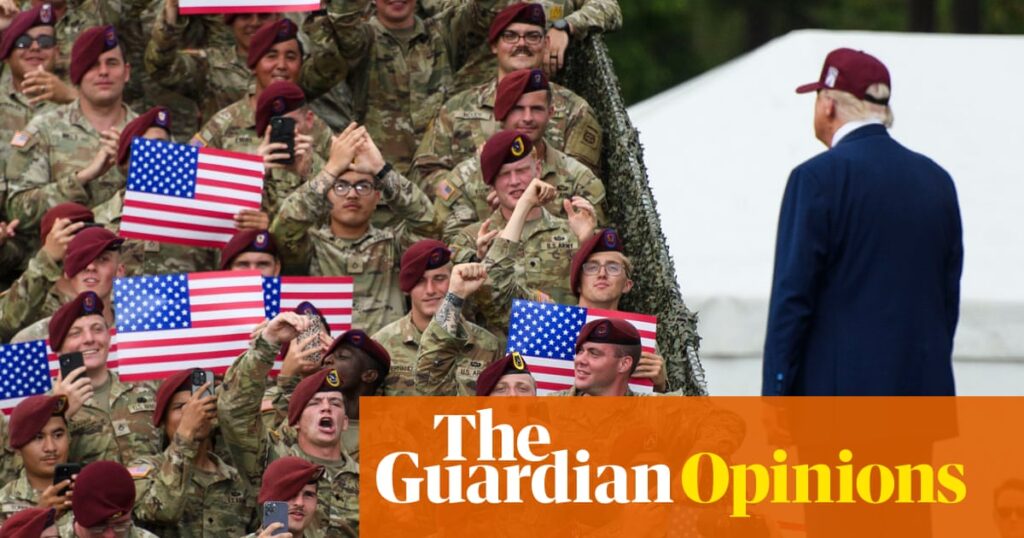
On Friday, former President Donald Trump signed an executive order to restore the Department of Defense to its original name, the Department of War. Trump, who has long advocated for a return to what he perceives as a more assertive military stance, remarked in August that the name “had a stronger sound.” He added, “As Department of War we won everything, and I think we’re going to have to go back to that.”
This decision, announced during a contentious political climate, has reignited debates about the role and image of the U.S. military. At a NATO summit in June, Trump referred to Pete Hegseth, his defense secretary, as his “secretary of war,” further emphasizing his desire to revive what he considers a “warrior ethos” in the armed forces.
Reviving the “Warrior Ethos”
The rebranding of the Department of Defense is seen by Trump and Hegseth as a step towards reinstating a military culture they believe has been diluted by modern social policies. Hegseth has openly criticized the inclusion of women on the battlefield and argued that diversity, equity, and inclusion (DEI) initiatives have weakened the military’s effectiveness. Florida Republican Senator Greg Steube introduced a bill supporting the name change, stating it would “pay tribute” to past fighters’ “renowned commitment to lethality.”
Trump, who often portrays himself as a peacemaker, now presides over a department whose name reflects his self-styled image as a “warrior king.” This move is consistent with an administration known for using language that some critics argue contradicts its actions, such as the January executive order titled “Ending the Weaponization of the Federal Government.”
Historical Context and Military Interventions
The Department of War, established in 1789, was renamed the Department of Defense in 1949 following an amendment to the National Security Act of 1947, which unified the military branches. Despite the name change, the department has been involved in numerous conflicts, often without formal declarations of war. The last official U.S. declaration of war was in 1941, following the attack on Pearl Harbor.
Since becoming the Department of Defense, the U.S. has engaged in at least four major undeclared wars, with mixed results. The Korean War ended in a stalemate, the Vietnam War was a defeat, and the wars in Iraq and Afghanistan have left lasting instability. According to historical data, the U.S. has conducted over 200 military interventions, with more than half occurring after the Cold War ended in 1989.
“The Department of Defense has never been a department of defense. It is a department of war.”
Recent Military Actions and Global Implications
Despite campaign promises to avoid new conflicts, Trump has continued to engage in military actions. Within ten days of his second term, he ordered airstrikes in northwestern Syria and Somalia. In March, he launched operations in Yemen, which resulted in unintended casualties and the loss of military equipment. These actions have drawn criticism and raised questions about the administration’s commitment to peace.
In June, after escalating tensions between Israel and Iran, the U.S. bombed Iranian nuclear facilities. Trump, who withdrew from the 2015 Iran Nuclear Agreement, justified the strikes as necessary to dismantle Iran’s nuclear capabilities. However, subsequent intelligence reports indicated minimal impact on Iran’s nuclear program.
The militarization of the “war on drugs” has also expanded under Trump’s leadership, with naval operations targeting drug traffickers near Venezuela. This has led to diplomatic tensions, with Venezuelan President Nicolás Maduro condemning the U.S. actions as aggressive and unjustified.
Budget Increases and Strategic Ambitions
To support his vision of “peace through strength,” Trump proposed a defense budget exceeding $1 trillion, marking a 13% increase from the previous year. This budget includes funding for the Golden Dome space defense system, a controversial project expected to cost between $2.5 trillion and $6.2 trillion. Critics warn that this initiative could accelerate a global arms race.
Historically, leaders like Franklin Delano Roosevelt have advocated for peace through diplomacy and example. In contrast, Trump’s approach emphasizes military strength and intervention, a stance that has drawn both domestic and international scrutiny.
“I hate war.” — Franklin Delano Roosevelt, 1936
Trump’s rebranding of the Department of Defense as the Department of War reflects his broader military strategy and personal brand. While it may bolster his image as a decisive leader, it also raises concerns about the U.S.’s role as an international peacekeeper and the potential for increased global conflict.
As the nation grapples with these changes, the implications of this rebranding will continue to unfold, influencing both domestic policy and international relations in the years to come.





